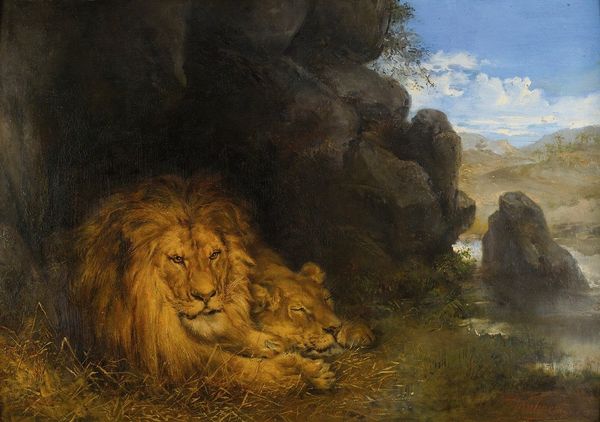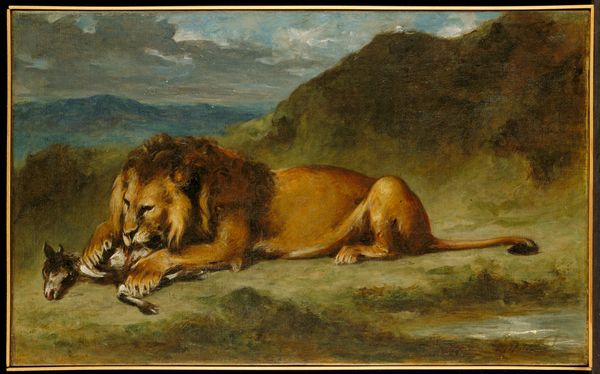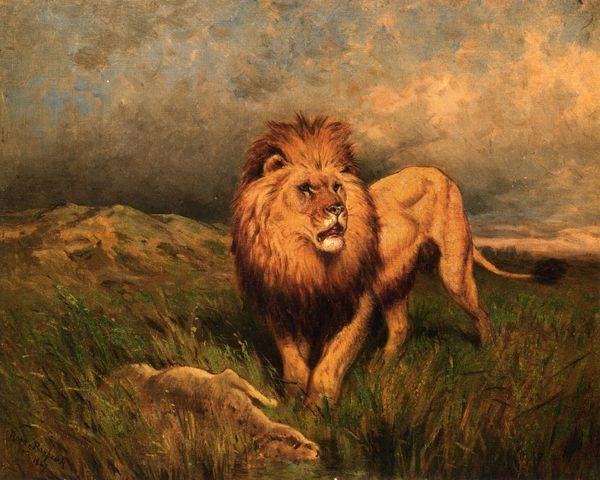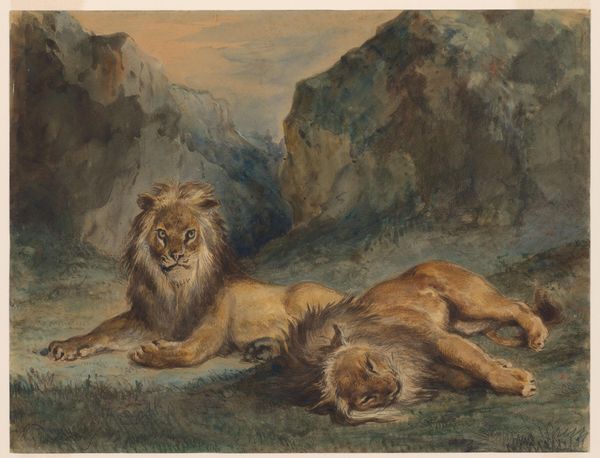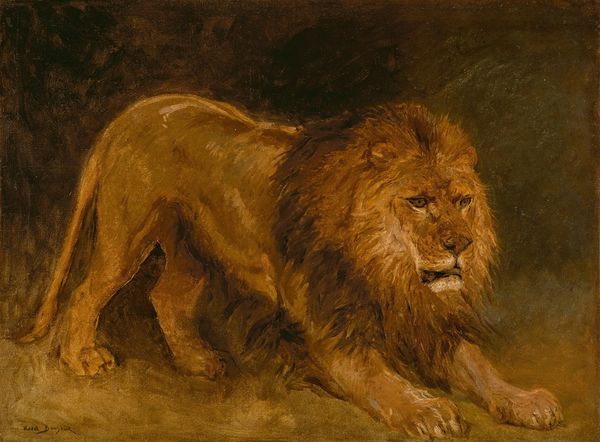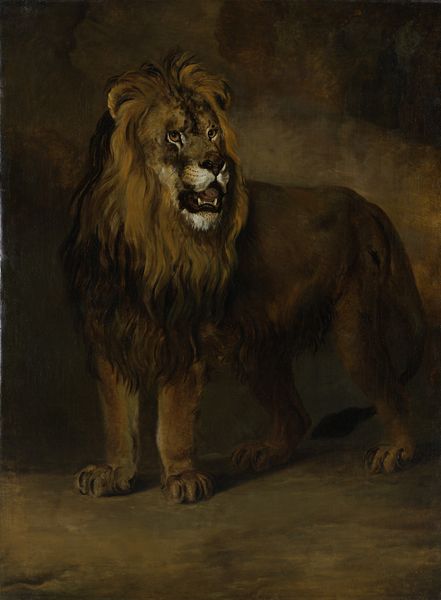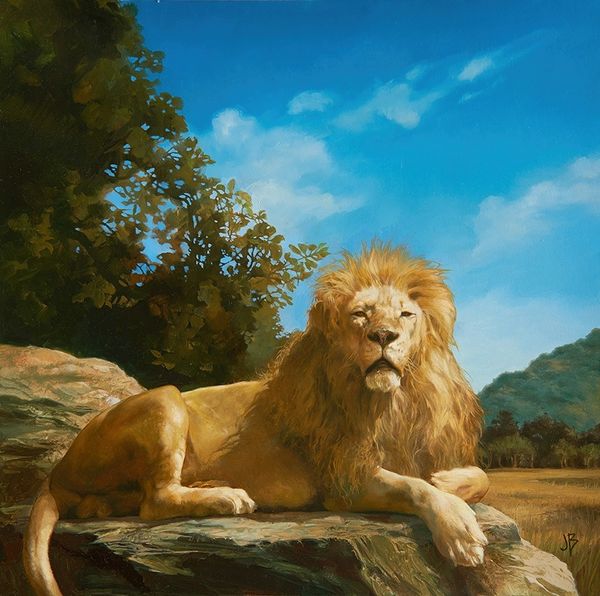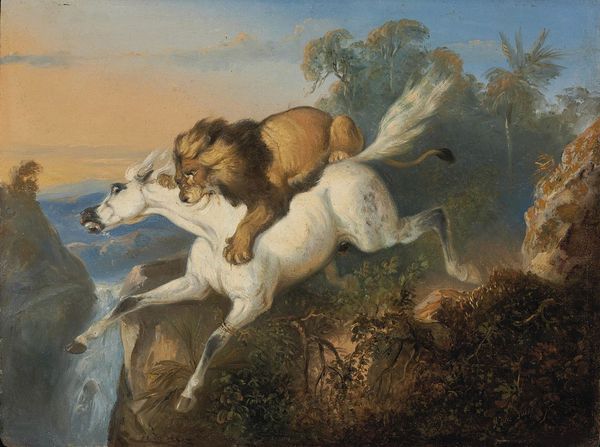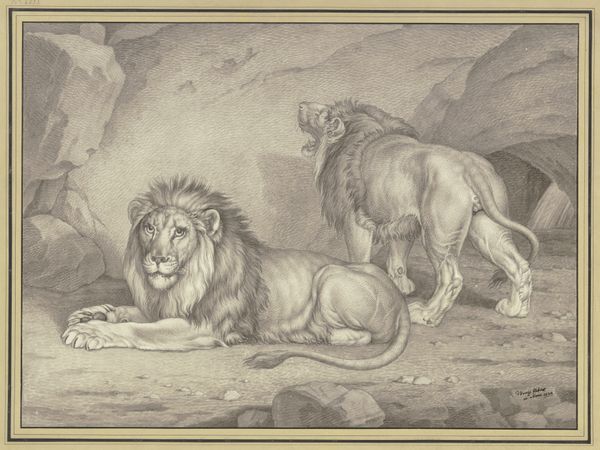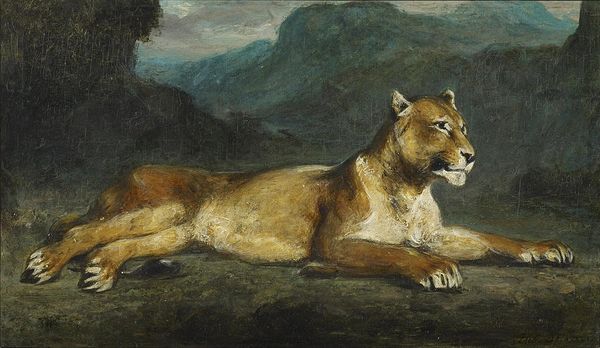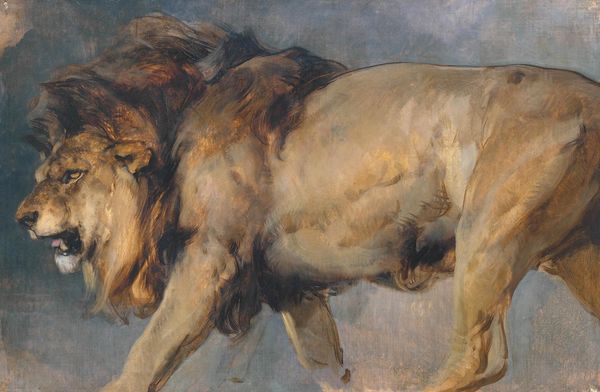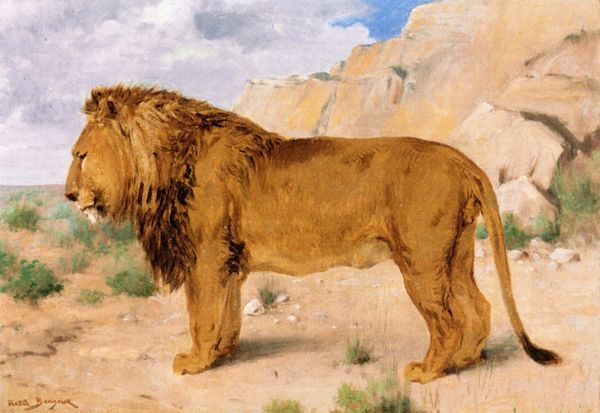
painting, oil-paint
#
narrative-art
#
baroque
#
animal
#
painting
#
oil-paint
#
landscape
#
oil painting
#
mythology
#
painting painterly
#
genre-painting
#
realism
Dimensions: 189 x 253 cm
Copyright: Public domain
Editor: So, here we have Jean-Baptiste Oudry’s "The Lion and the Fly," from 1732, painted in oil. I’m struck by how the lion, the supposed king, looks almost… agitated. What’s your take on it? Curator: Well, Oudry often embedded political critiques within his animal paintings. This piece, on the surface, illustrates La Fontaine’s fable, but let's consider it through an intersectional lens. Who traditionally holds power, and who is often dismissed as insignificant? Editor: You mean, the lion representing the aristocracy and the fly, the common person? Curator: Precisely. And think about the era: pre-revolution France. Oudry is subtly questioning power dynamics. Is the lion truly in control, or is its frustration revealing a deeper insecurity and, perhaps, a growing threat from those he deems insignificant? Editor: The fly, buzzing around, being an irritant – a constant, inescapable annoyance that highlights the Lion’s vulnerabilities...I didn’t even notice the fly. Curator: Visibility is key, isn’t it? Who gets seen, who is ignored, and whose voice matters? Even within a seemingly simple fable, Oudry touches upon anxieties about social hierarchies. Think about contemporary parallels: how are power structures challenged today, and who are the flies in our modern narratives? Editor: I see! So, it’s not just a story about a lion; it's a reflection of social and political unrest simmering beneath the surface, using animals as metaphors. Curator: Exactly. And by employing familiar narratives, Oudry makes his commentary more accessible, and therefore, perhaps, more potent. Editor: Wow, that completely changes how I see this piece! It makes it more urgent. Curator: Right? Fables, then and now, aren't just child's play. They’re potent tools for social commentary, aren't they?
Comments
No comments
Be the first to comment and join the conversation on the ultimate creative platform.


